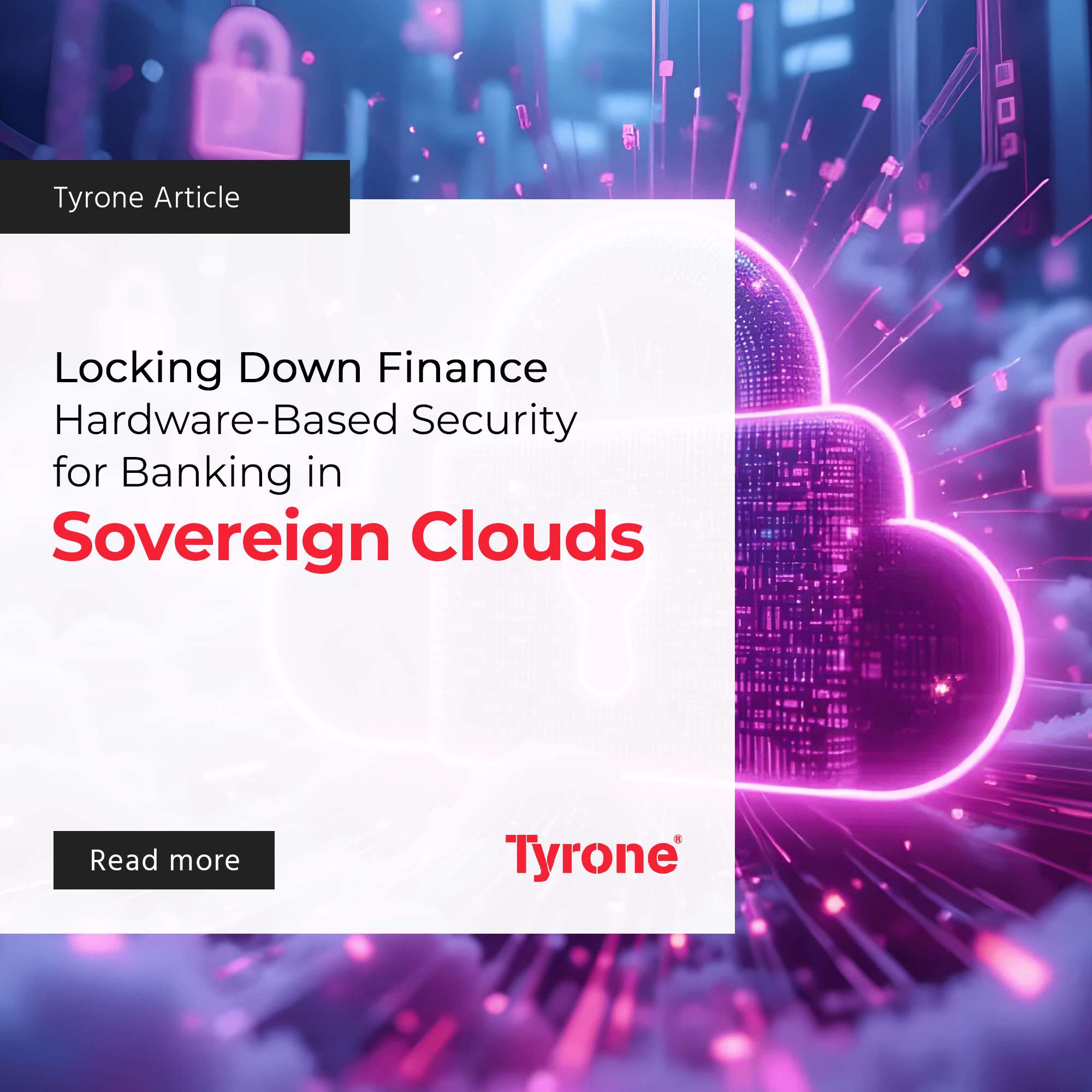Executive Overview
The convergence of digital transformation and tightening data sovereignty requirements has made sovereign clouds a cornerstone of modern banking. However, with cyberthreats intensifying and regulatory complexity escalating, stakeholders must look beyond mere compliance. Hardware-based security stands as the critical foundation for trust and resilience in banking’s sovereign cloud adoption—delivering robust defenses that software controls alone cannot provide.
The Banking Imperative for Sovereign Clouds
Global financial institutions operate within an environment defined by region-specific regulations, multi-jurisdictional data residency laws, and a threat landscape targeting every layer of their digital infrastructure. The sovereign cloud offers an answer: locally managed, geo-fenced cloud environments that guarantee control, privacy, and regulatory alignment—enabling banks to safeguard sensitive data while harnessing cloud-driven agility and innovation.
Leading sovereign cloud platforms now blend highly local governance of infrastructure, operations, and applications to prevent unauthorized data access, enforce regulatory compliance, and ensure resilience against regional disruptions and external interference. In 2024, the banking, financial services, and insurance (BFSI) sector led sovereign cloud adoption, handling over 28% of the global market share, specifically to address national compliance and strengthen protection against cyberthreats (Source: Grand View Research).
The Case for Hardware-Based Security
As regulation evolves from basic encryption requirements to mandates for full lifecycle key control, hardware security modules (HSMs) and physical security devices have emerged as the gold standard for financial-grade protection in sovereign clouds. Relying solely on software encryption or shared cloud keys is no longer tenable: stakeholders demand tamper-resistance, transparent auditability, and non-repudiable controls rooted in technology that cannot be circumvented remotely.

Core Functions of Hardware-Based Security
- Secure Key Management: HSMs generate, store, and manage cryptographic keys in isolated environments, ensuring that even cloud operators cannot access customer master keys.
- Tamper Evidency and Resistance: Security hardware is engineered to detect attempted manipulation, erase sensitive material upon attack, and provide forensic evidence for compliance and audit.
- Trusted Execution Environments: Hardware-based enclaves support confidential computing workloads, offering hardware-enforced boundaries for data in-use, at-rest, and in-transit.
This approach aligns precisely with the needs of banks operating in sovereign environments, where control over encryption keys and operational secrecy is mandated by law and critical for trust.
Addressing Regulatory Mandates and Operational Risks
Banks face an intricate regulatory maze, from GDPR in Europe to the DPDP Act in India and region-specific rules globally. The regulatory trend is unmistakable: financial data must remain under local jurisdictional control, with technical and operational measures that preclude access by foreign or unauthorized parties.
Hardware-based security directly addresses these requirements:
- Enforced Data Localization: With keys and cryptographic operations rooted in certified hardware on domestic soil, banks can guarantee that data access and decryption are physically restrained to local jurisdiction.
- Non-Repudiation and Auditability: Hardware tokens and secure enclaves generate immutable audit trails, facilitating regulatory reporting and incident forensics.
- Rapid Breach Containment: Should a breach occur at the software or network layer, hardware segregation ensures attackers cannot extract keys or decrypt sensitive assets, limiting exposure.
This is a strategic advantage: in 2024, 78% of banks faced ransomware attacks—a rate double the previous year—with average breach costs reaching $10 million per incident (Source: Mordor Intelligence). Hardware-intrinsic controls are now a board-level priority to stem these losses.
Economic Rationale and Competitive Edge
Hardware-based security in sovereign clouds is not simply a compliance checkbox—it is a catalyst for higher performance, reputation management, and reduced risk exposure:
- Cost of Breach Mitigation: Sovereign cloud adoption, anchored by hardware security, reduces average annual loss expectancy by 31% versus pre-cloud baselines in banking (Source: Cloud Security Alliance, via Number Analytics).
- Market Access and Customer Trust: Only those able to give regulators and clients verifiable assurance of local data control and breach resilience can participate fully in sensitive or highly regulated financial markets.
- Operational Efficiency and Agility: Banks leveraging centralized HSM and secure enclave architectures can automate compliance checks, accelerate cloud migration for sensitive workloads, and enable next-gen, privacy-centric services such as confidential AI analytics and secure open banking.
Implementation Considerations for Stakeholders
1. Integration and Interoperability
- Legacy and cloud-native banking applications require seamless access to hardware key management functions via secure APIs and standardized interfaces.
- Hybrid and multi-cloud configurations must balance uniform policy enforcement with local device deployment, ensuring no compliance “blind spots.”
2. Supply Chain and Sovereignty Assurance
- Audit the entire hardware supply chain for tamper resistance and national sourcing, minimizing risks of embedded vulnerabilities or extra-territorial control.
3. Continuous Operations and Disaster Recovery
- Hardware-backed cryptographic policies must extend to backup, failover, and recovery scenarios, ensuring uninterrupted compliance even under adverse conditions.
Future Outlook
As quantum threats emerge and privacy-enhancing banking applications proliferate, native hardware security will underpin the sovereign cloud’s next phase. Regulations will increasingly stipulate in-country hardware protection, directly influencing global banking strategies and cross-border partnerships.

Conclusion
Stakeholders in the financial sector must move decisively towards hardware-based security architectures for sovereign cloud deployments. This approach secures critical assets against a volatile threat landscape, guarantees compliance in an age of regulatory nationalism, and builds the trusted foundation upon which the future of digital banking will be built. The institutions that act now will not only weather the next cyber storm—they will set the benchmarks for trust, resilience, and innovation in sovereign digital finance.











